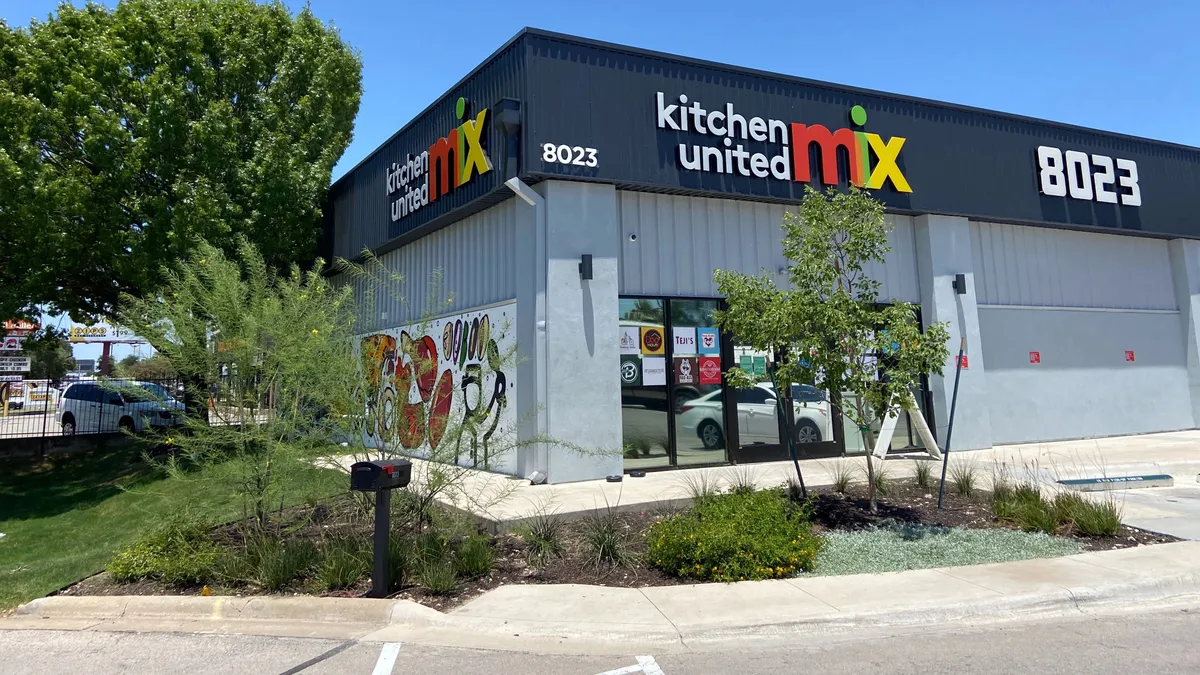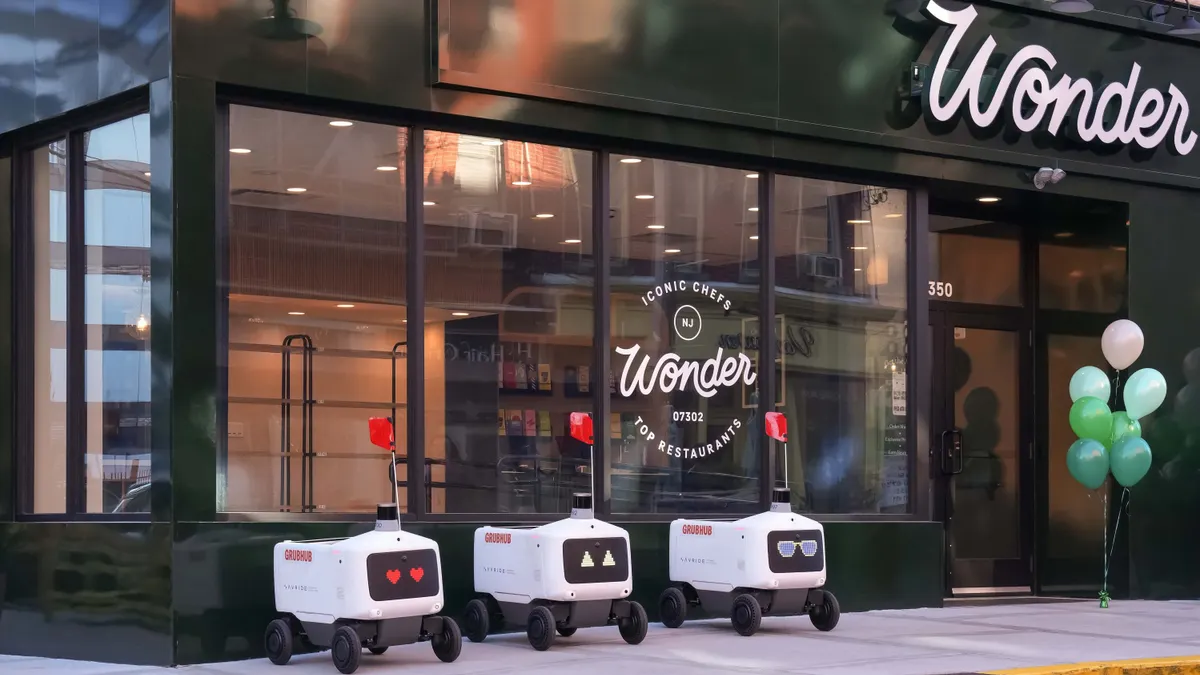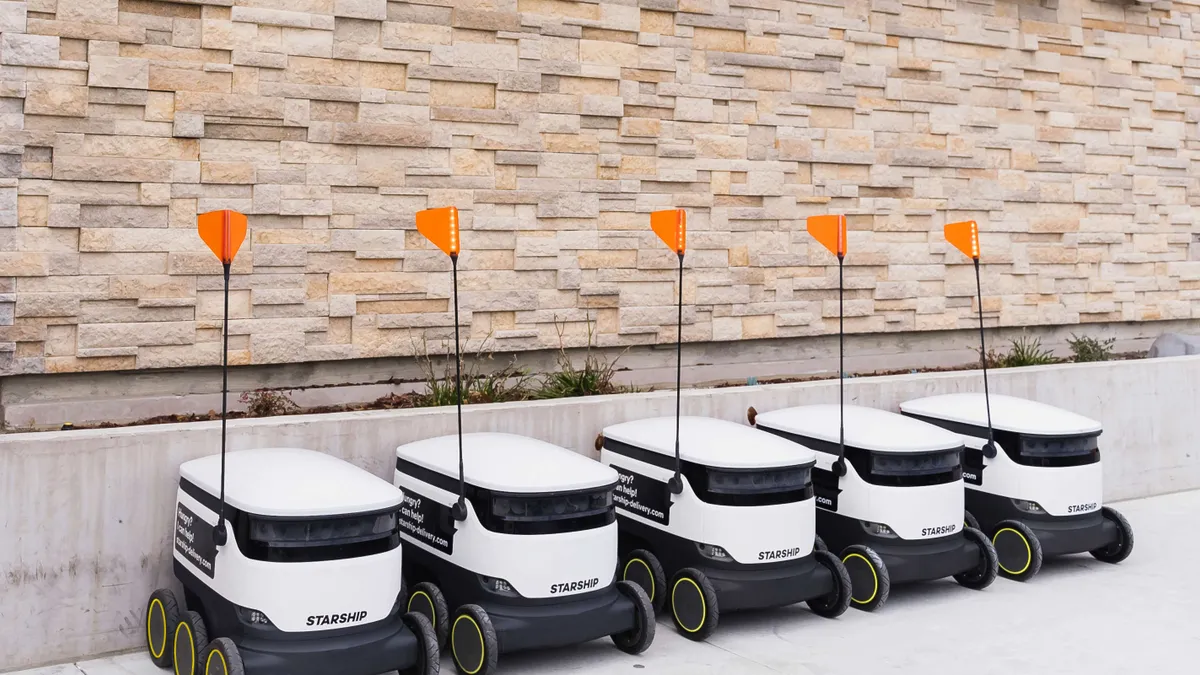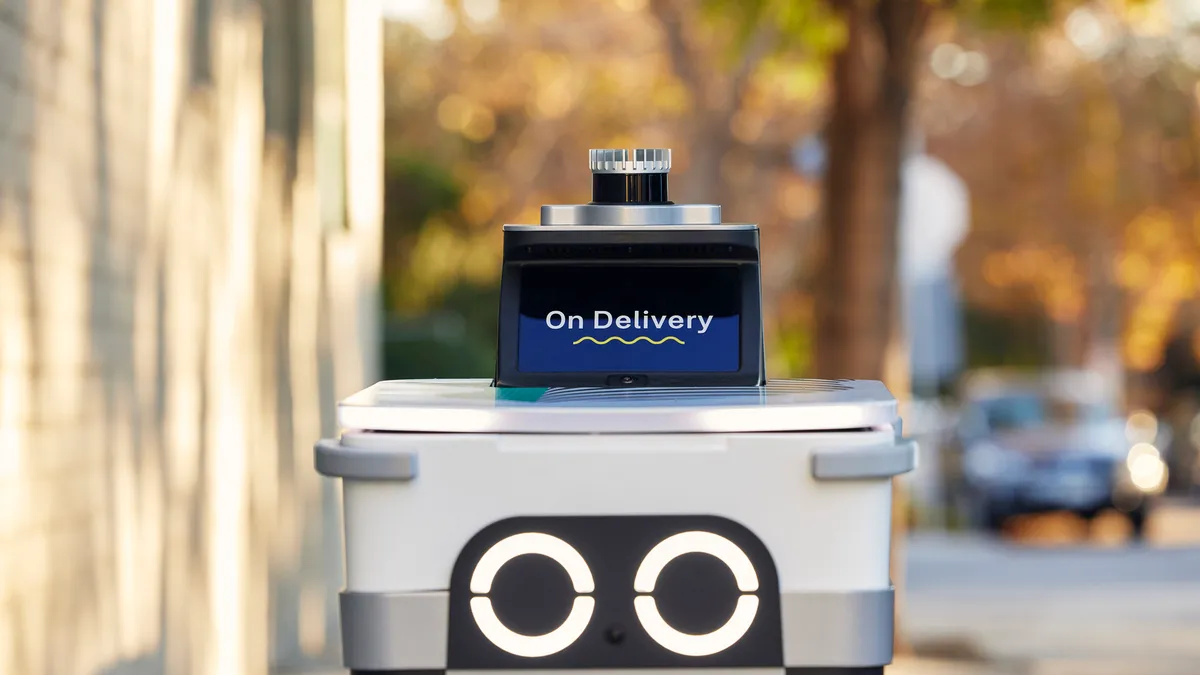Kitchen United was one of the first major ghost kitchen operators when it launched in 2017. Now, with the segment driving off-premise innovation and drawing investor dollars, Kitchen United looks towards an omnichannel future.
Atul Sood, Kitchen United’s chief business officer, describes his company’s approach to ghost kitchens as a “no-brainer.”
“[A restaurant] can get started in 30 days for under $30,000. And then you save about 50% of labor costs,” Sood said.
When the company first launched, its model consisted of a large warehouse facility that housed multiple delivery-only kitchens. Operations like this are a baseline for ghost kitchen providers today, but market offerings — and Kitchen United’s model — have evolved as the segment has grown, said Michael Schaefer, global lead of food and beverage at Euromonitor International.
“[Kitchen United has] expanded like a lot of other players into the adjacent occasions around [off-premise service],” Schaefer said.
The company currently operates seven ghost kitchens in major metropolitan areas, each housing between 10 and 14 kitchens and around 16 to 20 brands. Although these facilities focus primarily on delivery, they also offer additional ordering channels, including kiosks for takeout. Three of their facilities also have seating for customers. The labor savings, low capital costs and access to dense, metropolitan markets are all draws for operators.
For Fresh Brothers Pizza, Kitchen United’s promises have held up.
“We opened our first ghost kitchen with Kitchen United in 23 days and we did it for $30,000,” Geoff Goodman, CEO of Fresh Brothers Pizza, said.
Comparatively, opening a brick-and-mortar store would cost Fresh Brothers Pizza around $400,000, Goodman said.
The 21-unit, California-based pizza brand opened its first ghost kitchen with Kitchen United in downtown Pasadena in May 2020, at a moment when much of the restaurant industry was contracting sharply. Now, that location rakes in about half a million dollars in annual sales, or about one-third of the volume of a traditional Fresh Brothers unit. Goodman doesn’t think this location has reached its full potential, either, and Kitchen United’s expansion strategy could bring additional opportunities.
“They are going after sites in places where restaurants would normally go,” Goodman said. “They've selected spots that although it would be too large for us ... if they [had] smaller square footprint[s], would be spots that we would consider opening up a unit in.”
Though Goodman partnered with the ghost kitchen provider at the height of the pandemic, he said the decision wasn’t related to the COVID-19 crisis, but rooted in consumer trends he had observed.
Experts agree the ghost kitchen market still has a lot of room to grow. Although delivery demand has proliferated in the last two years, it still only represents about 8% of restaurant traffic in 2021, according to data from the NPD Group. Carryout represents 38% of restaurant traffic, and drive-thru makes up 34%.
Facility operations are designed to support brands, delivery drivers
This limited market size could put pressure on delivery-only kitchens to add new channels. Kitchen United, for instance, has begun offering direct ordering at its locations.
“Each of our centers has a front of house where we have kiosk-based ordering,” Sood said. “The whole idea is to give the consumer choice, whichever channel the consumer wants to go through, let them go through that.”
Kitchen United is looking to expand the types of ghost kitchens it builds, Sood said, and more units will have seating in the future. He characterized the units under development as omnichannel.
Some of Kitchen United’s new units will open through a partnership with Kroger, a major grocery chain that owns several other supermarket banners, including Ralph’s. Fresh Brothers Pizza will open its second ghost kitchen with Kitchen United at a Ralph’s store in Los Angeles later this year.
In addition to offering partner restaurants multiple ordering channels, Kitchen United also manages day-to-day operations at its centers.
“The restaurant cooks,” Sood said. “But we do all the other back-of-house labor that is required to actually run the restaurant … from cleaning and sanitization to running food from the kitchen to the customer or delivery driver."
Goodman said this model benefited Fresh Brothers Pizza by allowing the restaurant to focus on attracting back-of-the-house talent.
“From our end, all we have to do is take the order, make the product and hand it off to a Kitchen United employee,” Goodman said. From there, the food goes to a delivery driver or a customer collecting the order on-site.
Sood emphasized Kitchen United’s support of third-party delivery drivers, who frequent Kitchen United facilities regularly thanks to the number of restaurant brands they house. This frequency gives Kitchen United staff the chance to build relationships with drivers, according to Sood, and the company also offers couriers coffee, water and access to bathrooms.
“[These amenities] might sound simple, or meaningless, but they’re absolutely not,” Sood said. “[They’re] super important.” Sood worked as a delivery driver between his time as a business development director for McDonald’s from 2015 to 2017 and his tenure as Kitchen United CBO, which began in 2017.
“Drivers are a representation of our brand [and] the restaurant brand. They need to be treated with respect and dignity,” Sood said.
Acquisitions position Kitchen United for growth
Kitchen United’s growth trajectory may mirror larger trends in the ghost kitchen space.
In early October, the company announced it was buying Zuul, one of the first ghost kitchens in the New York City market. With Zuul’s technology — optimized for large orders from New York high-rises — and its longtime experience in the market, Kitchen United has given its launch of its East Coast operations this year a pre-emptive boost.
After several years of consistent growth and experimentation, ghost kitchens like Kitchen United have emerged as major players and are now ready to buy up competitors and scale up production.
“So much about being a third-party ghost kitchen operator is just finding real estate. And so scale is pretty important there,” Schaefer said.
As companies scale, Schaefer said, they attract more investment capital, eventually exerting a gravitational pull on the rest of a segment. He predicts there would be more acquisitions and mergers within the ghost kitchen segment in the next few years.
“We've seen that play out across a lot of industries,” Schaefer said.
Other major players in the ghost kitchen space have expanded dramatically in the past few months, with C3 raising $90 million since July, and Reef Technology’s kitchen operations signing deals to add hundreds of units with Wendy’s, 800 Degrees Pizza and TGI Fridays.
In the near future, Schaefer said, companies will have to figure out which ghost kitchen models are profitable.
“We are seeing that the existing production processes and sales processes, which have just kind of had delivery grafted on top of them, don't fully work,” Schaefer said. “[There are] a lot of different bets on the model that [it] is going to ultimately be profitable enough to continue.”
Goodman, despite Fresh Brothers’ success with Kitchen United, said profitability could be a problem for some parts of the ghost kitchen segment.
“With pressures on supply chain, it's harder and harder for all those different parties who are involved in a ghost kitchen transaction to actually be profitable,” Goodman said.
Still, Schaefer said, ghost kitchens face the same fundamental questions as all restaurants.
“We think about it in terms of, is the food good? Is it hard to get here fast? Can I afford it?” Schaefer said. “If you look at Domino's Pizza, that is functionally a ghost kitchen. In the U.S., it has significant takeaway business, but in other countries it has a lot of outlets that are essentially delivery only.”
Sood, meanwhile, is confident the future is bright for delivery-only concepts. He pointed to international markets as examples of the potential of ghost kitchens like Kitchen United.
“There are hundreds upon hundreds of ghost kitchens in India and China,” he said, adding that in some Middle Eastern markets, more than 50% of restaurant sales are delivery sales. “There is just a lot of potential for growth here in the U.S."


















